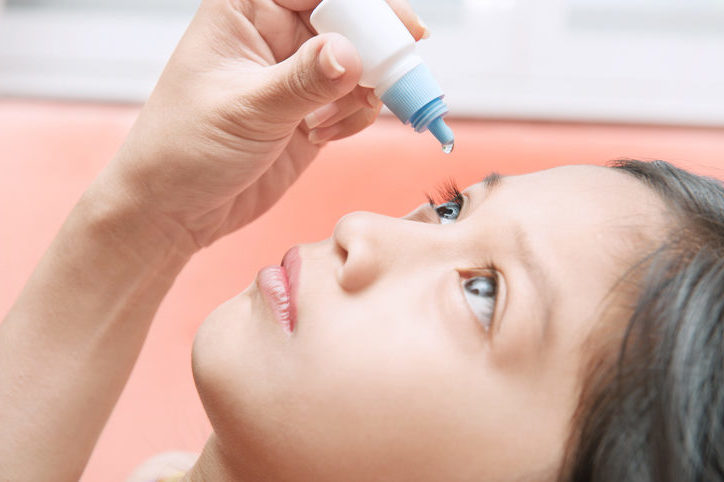April 1, 2020
By Dwight Akerman, OD, MBA, FAAO, FBCLA
 Topical low-dose atropine is an emerging therapy for myopia management, but its optimal concentration and long-term efficacy are still not defined. Several well-controlled clinical trials, e.g., ATOM1 and ATOM2, have been published, which studied various concentrations of atropine eye drops. However, none have directly compared the efficacy and safety of multiple low concentrations.
Topical low-dose atropine is an emerging therapy for myopia management, but its optimal concentration and long-term efficacy are still not defined. Several well-controlled clinical trials, e.g., ATOM1 and ATOM2, have been published, which studied various concentrations of atropine eye drops. However, none have directly compared the efficacy and safety of multiple low concentrations.
Yam and co-researchers from The Chinese University of Hong Kong Department of Ophthalmology and Visual Sciences have recently published the results of the Low-Concentration Atropine for Myopia Progression (LAMP) Study phase 2. This study is a randomized, double-masked clinical trial that looked at the efficacy and safety of 0.05 percent, 0.025 percent and 0.01 percent atropine eye drops over two years. The LAMP study phase 1 results were published in 2018.
The aim of phase 2 of the LAMP study was to answer the following questions: 1) Which concentration of atropine confers the best efficacy in myopia control over two years? 2) Are the efficacies of low-concentration atropine better in the second year than the first year? 3) Are the side effects of low concentration atropine similar in the first and second year, and did they remain tolerable? 4) What is the efficacy after administration of 0.05 percent atropine to the placebo self-control group for a year?
The authors concluded that over two years, the efficacy of topical 0.05 percent atropine was double that of 0.01 percent atropine, and it remained the optimal concentration among the studied atropine concentrations in slowing myopia progression.
The generalizability of results from this clinical trial is limited by the predominantly Asian ethnicity of the study populations. Several RCTs to explore the efficacy and safety of various concentrations of topical low-dose atropine in predominantly Caucasian populations are currently underway in the United States and Western Europe.
Abstract
Two-Year Clinical Trial of the Low-Concentration Atropine for Myopia Progression (LAMP) Study: Phase 2 Report
Jason C. Yam, Fen Fen Li, Xiujuan Zhang, Shu Min Tang, Benjamin Hon Kei Yip, KaWai Kam, Simon T. Ko, Alvin L. Young, Clement C. Tham, Li Jia Chen, Chi Pui Pan
PURPOSE: To evaluate the efficacy and safety of 0.05 percent, 0.025 percent, and 0.01 percent atropine eye drops over two years to determine which is the optimal concentration for longer-term myopia control.
DESIGN: Randomized, double-masked trial extended from the Low-Concentration Atropine for Myopia Progression (LAMP) Study.
PARTICIPANTS: 383 of 438 children (87 percent) aged 4 to 12 years with myopia of at least –1.0 diopter (D) originally randomized to receive atropine 0.05 percent, 0.025 percent, 0.01 percent or placebo once daily in both eyes in the LAMP phase 1 study were continued in this extended trial (phase 2).
METHODS: Children in the placebo group (phase 1) were switched to receive 0.05 percent atropine from the beginning of the second-year follow-up, whereas those in the 0.05 percent, 0.025 percent and 0.01 percent atropine groups continued with the same regimen. Cycloplegic refraction, axial length (AL), accommodation amplitude, photopic and mesopic pupil diameter, and best-corrected visual acuity were measured at four-month intervals.
MAIN OUTCOME MEASURES: Changes in spherical equivalent (SE) and AL and their differences between groups.
RESULTS: Over the two-year period, the mean SE progression was 0.55±0.86D, 0.85±0.73D, and 1.12±0.85D in the 0.05 percent, 0.025 percent and 0.01 percent atropine groups, respectively (P = 0.015, P < 0.001, and P = 0.02, respectively, for pairwise comparisons), with mean AL changes over two years of 0.39±0.35 mm, 0.50±0.33 mm, and 0.59±0.38 mm (P = 0.04, P < 0.001, and P = 0.10, respectively). Compared with the first year, the second-year efficacy of 0.05 percent and 0.025 percent atropine remained similar (P > 0.1) but improved mildly in the 0.01 percent atropine group (P = 0.04). For the phase 1 placebo group, the myopia progression was reduced significantly after switching to 0.05 percent atropine (SE change, 0.18 D in second year vs. 0.82 D in first year [P < 0.001]; AL elongated 0.15 mm in second year vs. 0.43 mm in first year [P < 0.001]). Accommodation loss and change in pupil size in all concentrations remained similar to the first-year results and were well tolerated. Visual acuity and vision-related quality of life remained unaffected.
CONCLUSIONS: Over two years, the efficacy of 0.05 percent atropine observed was double that observed with 0.01 percent atropine, and it remained the optimal concentration among the studied atropine concentrations in slowing myopia progression.
Yam, J. C., Li, F. F., Zhang, X., Tang, S. M., Yip, B. H. K., Kam, K. W., … & Pang, C. P. (2019). Two-Year Clinical Trial of the Low-concentration Atropine for Myopia Progression (LAMP) Study: Phase 2 Report. Ophthalmology.
DOI: 10.1016/j.ophtha.2019.12.011













